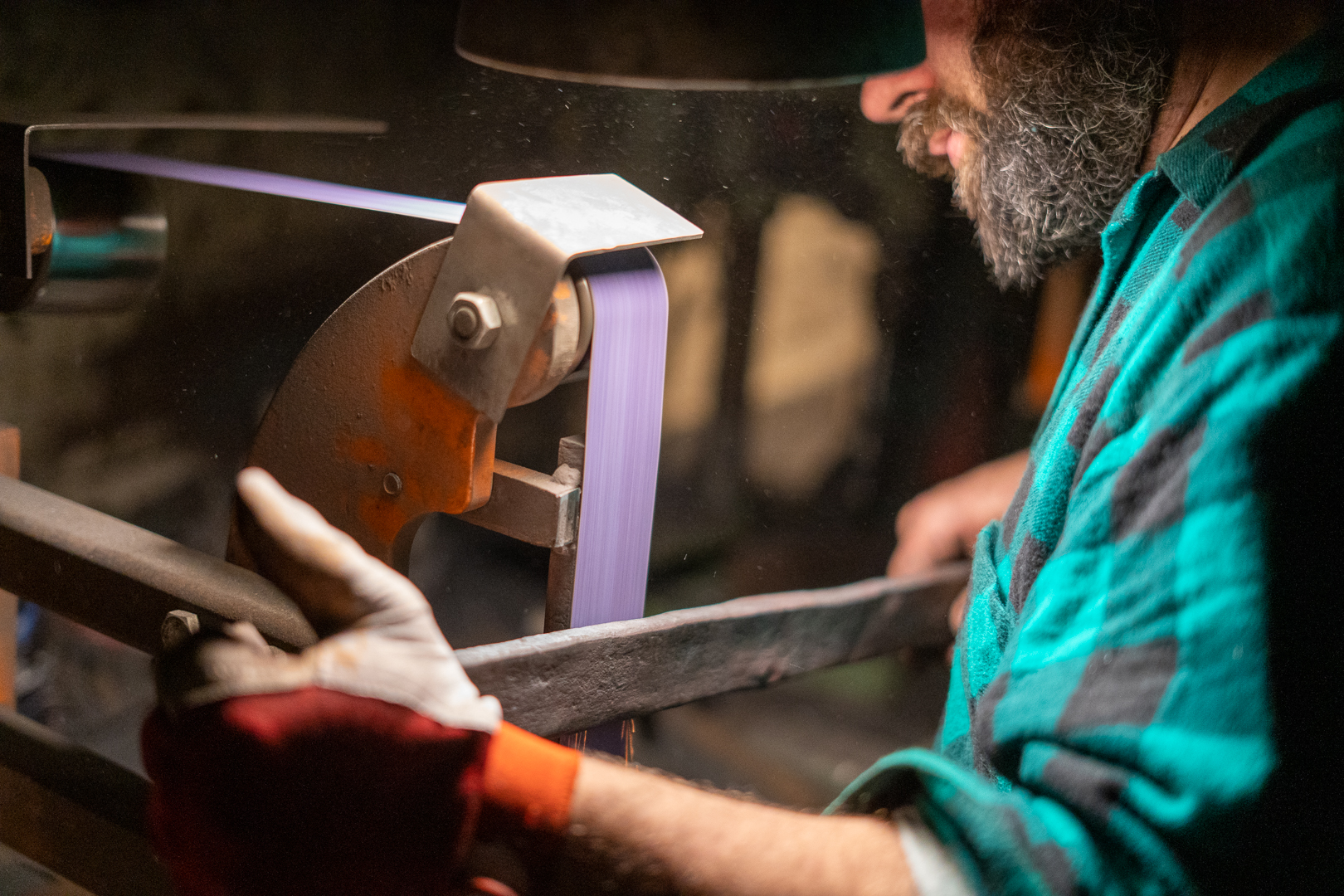14 Comments
European knifemaking is a tradition that dates back to ancient times and continues today with a focus on craftsmanship and the use of modern techniques. Some key aspects of European knifemaking include:
- Traditional Techniques: European knifemakers employ various methods such as forging, stock removal or forge welding. They utilize different types of metals, including carbon steel, stainless steel, tool steel, and Damascus steel, as well as natural wood or synthetic materials for handles.
- Pattern Welding: Historically, pattern welding, which involves folding and forging alternating layers of steel into rods and then twisting them to form complex patterns, was a common technique in Europe. It was particularly prevalent among the Celts and contributed to the creation of decorative and structurally sound swords. Although pattern welding has fallen out of use in Europe, its aesthetic qualities are still appreciated in the production of certain types of blades.
- Quality and Craftsmanship: The quality of European knives is highly regarded, with attention given to every detail of the knife-making process. From designing the knife to profiling the blade, heat treating, making and attaching the handle, finishing, and sharpening, each step is critical to the final product. The aim is to create knives that are not only functional but also beautiful and intricate.
- Customization: European knifemakers offer the ability to create custom knives with unique designs and styles, catering to the interests and preferences of individual customers. This allows for personalization and ensures that each knife is tailored to the user’s needs.
- Accessories and finish: Beyond the blade itself, European knifemakers also craft accessories such as knife boxes and provide protecting wax for knives. Additionally, they offer a variety of finishes and treatments to enhance the knife’s appearance and performance.
Overall, European knifemaking is a testament to the region’s rich history and the enduring value placed on skilled craftsmanship and the art of creating fine tools.



14 Comments
itstitle
excerptsa
où pouvez-vous obtenir kamagra sans une perskripion
générique kamagra american express
buy enclomiphene price at walmart
buying enclomiphene generic pricing
discount androxal cheap real
cheap androxal mastercard buy
purchase dutasteride canada online order
order dutasteride cheap uk
flexeril cyclobenzaprine order online with e check
cheapest buy flexeril cyclobenzaprine cheap prices
buy gabapentin purchase generic
how to get samples of gabapentin and cialis
No perscription fildena next day
fildena usa where to buy
discount staxyn usa buy online
get staxyn generic pharmacy online
buying itraconazole cheap mastercard
itraconazole for women and men who wants to get pregnant
how to order avodart generic london
cheap avodart cheap wholesale
discount rifaximin canada fast shipping
online order rifaximin purchase online uk
how to buy xifaxan canada generic
get xifaxan price discount
kamagra 800 na objednání
levné obecné kamagra